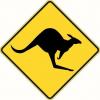
Originally Posted by
Mark Gibney

Such an interesting discussion, I don't have the depth of experience using handtools as extensively as most of you here do.
How do you even know what the degree of angle is on a Stanley chipbreaker? It's a rounded shape where it comes into contact with the iron. How do you measure this?
It depends on what means you have to measure the angle. With an angle gauge:
Angle Gauge.png
(This one is listed as being at Lowes for less than $10.)
It is possible to get a relative measurement of the angle between the blade and the deflection point of the chip breaker.
You could also cut a piece of scrap to 45º to use as an 'eyeball' gauge.
It may be a help to remember the perfect angle for one person's local lumber may not be ideal for someone else's local lumber. 50º may be a general sweet spot. There are also likely low angles that offer no interaction and higher angles causing too much push back on the shaving trying to exit.
If what you have is working well, it likely isn't broken, it may be better to not try fixing it.
jtk
"A pessimist sees the difficulty in every opportunity; an optimist sees the opportunity in every difficulty."
- Sir Winston Churchill (1874-1965)




 Reply With Quote
Reply With Quote





